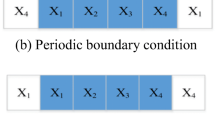Abstract
In multimedia communication, significance of the images for data representation is noteworthy. In this context, secure transmission of images over open channel has become a challenging task. Creation of different strategies in improving the secure image transmission always has a demand. The proposed work suggests an RGB image encryption with the confluence of attractors and hardware triggered key image in which confusion and diffusion were accomplished by Lorenz, Lü and Cellular Automata attractors. The uniqueness of proposed encryption scheme is a key image generation module through cascaded Ring Oscillator circuit which creates M × N key image for diffusion of pixels. Facilitating the authenticated networked access to key image generation hardware enables the secure server-client architecture for a variety of secure image transfer applications. The proposed approach is a hardware – software codesign which possesses a good keyspace, improved key sensitivity and satisfies the various statistical parameters thus offering substantial resistance to differential, occlusion and chosen plaintext attacks on RGB images.

































Similar content being viewed by others
References
Abdo AA, Lian S, Ismail IA et al (2013) A cryptosystem based on elementary cellular automata. Commun Nonlinear Sci Numer Simul 18:136–147. https://doi.org/10.1016/j.cnsns.2012.05.023
Avarouglu E, Tuncer T, Özer AB et al (2015) A novel chaos-based post-processing for TRNG. Nonlinear Dyn 81:189–199. https://doi.org/10.1007/s11071-015-1981-9
Belazi A, Abd El-Latif AA, Belghith S (2016) A novel image encryption scheme based on substitution-permutation network and chaos. Signal Process 128:155–170. https://doi.org/10.1016/j.sigpro.2016.03.021
Chen G, Mao Y, Chui CK (2004) A symmetric image encryption scheme based on 3D chaotic cat maps. Chaos, Solitons Fractals 21:749–761. https://doi.org/10.1016/j.chaos.2003.12.022
Elashry IF, Faragallah OS, Abbas AM et al (2012) A new method for encrypting images with few details using Rijndael and RC6 block ciphers in the electronic code book mode. Inf Secur J A Glob Perspect 21:193–205. https://doi.org/10.1080/19393555.2011.654319
Elkamchouchi HM, Makar MA (2005) Measuring encryption quality for bitmap images encrypted with rijndael and KAMKAR block ciphers. In: Proc. Twenty-Second Natl. Radio Sci. Conf. 2005. NRSC 2005. pp 277–284. https://doi.org/10.1109/NRSC.2005.194011
Hua Z, Zhou Y, Pun CM, Chen CLP (2015) 2D sine logistic modulation map for image encryption. Inf Sci (Ny) 297:80–94. https://doi.org/10.1016/j.ins.2014.11.018
Javale D, Dixit B, Javale P (2012) Performance evaluation of wireless image transmission: an approach using embedded systems. Hybrid Intell Syst (HIS), 2012 12th Int Conf 125–130. https://doi.org/10.1109/HIS.2012.6421321
Jin J (2012) An image encryption based on elementary cellular automata. Opt Lasers Eng 50:1836–1843. https://doi.org/10.1016/j.optlaseng.2012.06.002
Kalpana J, Murali P (2015) An improved color image encryption based on multiple DNA sequence operations with DNA synthetic image and chaos. Optik (Stuttg) 126:5703–5709. https://doi.org/10.1016/j.ijleo.2015.09.091
Li X, Wang L, Yan Y, Liu P (2016) An improvement color image encryption algorithm based on DNA operations and real and complex chaotic systems. Opt - Int J Light Electron Opt 127:2558–2565. https://doi.org/10.1016/j.ijleo.2015.11.221
Pareek NK, Patidar V, Sud KK (2006) Image encryption using chaotic logistic map. Image Vis Comput 24:926–934. https://doi.org/10.1016/j.imavis.2006.02.021
Park M, Rodgers JC, Lathrop DP (2015) True random number generation using CMOS Boolean chaotic oscillator. Microelectron J 46:1364–1370. https://doi.org/10.1016/j.mejo.2015.09.015
Patidar V, Pareek NK, Purohit G, Sud KK (2010) Modified substitution–diffusion image cipher using chaotic standard and logistic maps. Commun Nonlinear Sci Numer Simul 15:2755–2765. https://doi.org/10.1016/j.cnsns.2009.11.010
Seyedzadeh SM, Mirzakuchaki S (2012) A fast color image encryption algorithm based on coupled two-dimensional piecewise chaotic map. Signal Process 92:1202–1215. https://doi.org/10.1016/j.sigpro.2011.11.004
SI Y, KANG B (2008) Digital image scrambling based on improved Arnold transformation. Comput Technol Dev 2:21 http://en.cnki.com.cn/Article_en/CJFDTOTAL-WJFZ200802021.htm
Sunar B, Martin WJ, Stinson DR (2007) A provably secure true random number generator with built-in tolerance to active attacks. IEEE Trans Comput 56:109–119. https://doi.org/10.1109/TC.2007.250627
Tang Q, Kim B, Lao Y et al (2014) True random number generator circuits based on single- and multi-phase beat frequency detection. Proc IEEE 2014 Cust Integr Circuits Conf CICC 2014. https://doi.org/10.1109/CICC.2014.6946136
Usama M, Khan MK, Alghathbar K, Lee C (2010) Chaos-based secure satellite imagery cryptosystem. Comput Math Appl 60:326–337. https://doi.org/10.1016/j.camwa.2009.12.033
Wang Y, Wong K-W, Liao X et al (2009) A chaos-based image encryption algorithm with variable control parameters. Chaos, Solitons Fractals 41:1773–1783. https://doi.org/10.1016/j.chaos.2008.07.031
Wang X-Y, Yang L, Liu R, Kadir A (2010) A chaotic image encryption algorithm based on perceptron model. Nonlinear Dyn 62:615–621. https://doi.org/10.1007/s11071-010-9749-8
Wang X, Teng L, Qin X (2012) A novel colour image encryption algorithm based on chaos. Signal Process 92:1101–1108. https://doi.org/10.1016/j.sigpro.2011.10.023
Wang X, Liu L, Zhang Y (2015) A novel chaotic block image encryption algorithm based on dynamic random growth technique. Opt Lasers Eng 66:10–18. https://doi.org/10.1016/j.optlaseng.2014.08.005
Wang L, Song H, Liu P (2016) A novel hybrid color image encryption algorithm using two complex chaotic systems. Opt Lasers Eng 77:118–125. https://doi.org/10.1016/j.optlaseng.2015.07.015
Wang XY, Zhang YQ, Liu LT (2016) An enhanced sub-image encryption method. Opt Lasers Eng 86:248–254. https://doi.org/10.1016/j.optlaseng.2016.06.008
Wang X, Zhao Y, Zhang H, Guo K (2016) A novel color image encryption scheme using alternate chaotic mapping structure. Opt Lasers Eng 82:79–86. https://doi.org/10.1016/j.optlaseng.2015.12.006
Wei X, Guo L, Zhang Q et al (2012) A novel color image encryption algorithm based on DNA sequence operation and hyper-chaotic system. J Syst Softw 85:290–299. https://doi.org/10.1016/j.jss.2011.08.017
Wong K-W, Kwok BS-H, Law W-S (2008) A fast image encryption scheme based on chaotic standard map. Phys Lett A 372:2645–2652. https://doi.org/10.1016/j.physleta.2007.12.026
Zhang Q, Wei X (2013) A novel couple images encryption algorithm based on DNA subsequence operation and chaotic system. Opt - Int J Light Electron Opt 124:6276–6281. https://doi.org/10.1016/j.ijleo.2013.05.009
Zhang Q, Guo L, Wei X (2013) A novel image fusion encryption algorithm based on DNA sequence operation and hyper-chaotic system. Opt - Int J Light Electron Opt 124:3596–3600. https://doi.org/10.1016/j.ijleo.2012.11.018
Acknowledgements
The authors wish to thank SASTRA University for providing infrastructure through the Research & Modernization Fund (Ref.No: R&M / 0026 / SEEE – 010 / 2012 – 13) to carry out the research work.
Author information
Authors and Affiliations
Corresponding author
Rights and permissions
About this article
Cite this article
Rajagopalan, S., Rethinam, S., Arumugham, S. et al. Networked hardware assisted key image and chaotic attractors for secure RGB image communication. Multimed Tools Appl 77, 23449–23482 (2018). https://doi.org/10.1007/s11042-017-5566-0
Received:
Revised:
Accepted:
Published:
Issue Date:
DOI: https://doi.org/10.1007/s11042-017-5566-0




